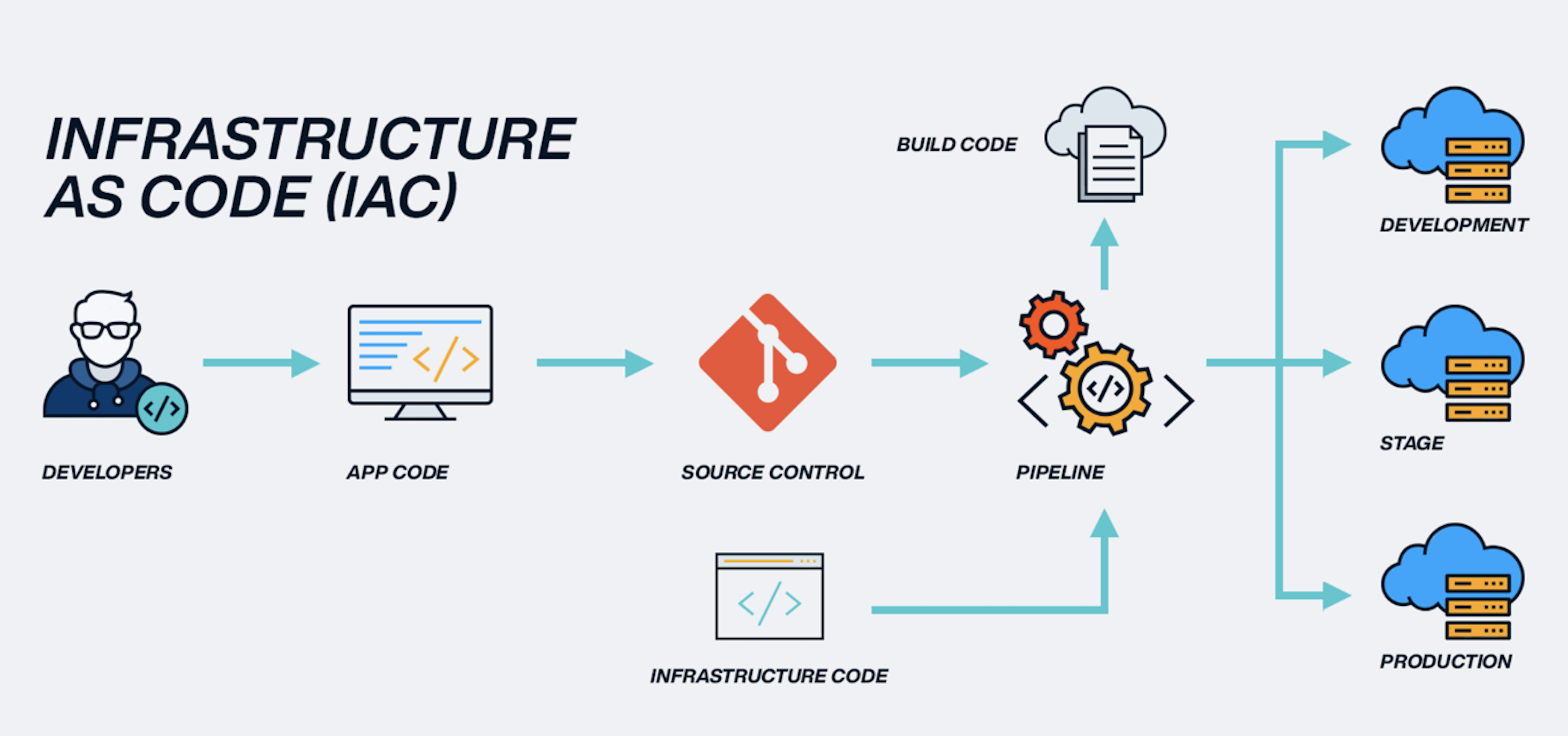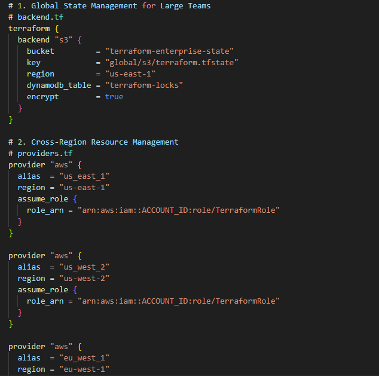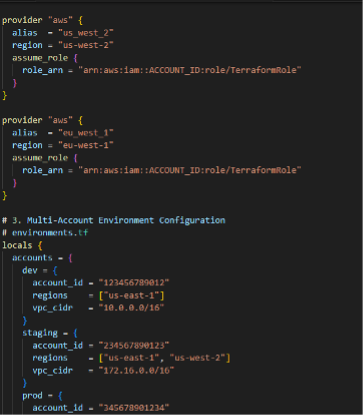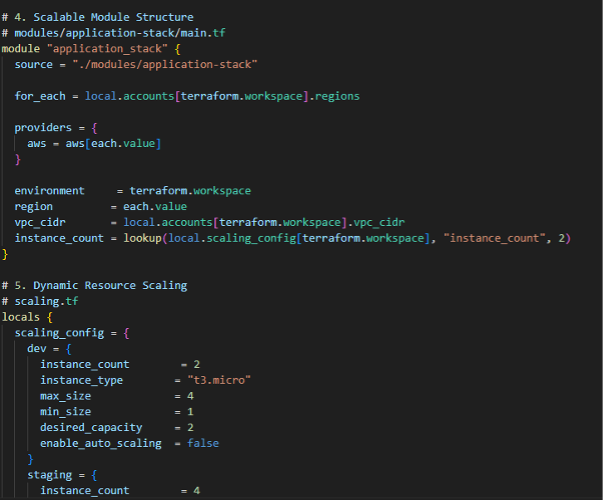Understanding Infrastructure as Code at Scale
A detailed analysis of how large enterprises adopt Infrastructure as Code and the challenges they face when scaling during cloud migration.
Join the DZone community and get the full member experience.
Join For FreeInfrastructural as Code is an IT approach where the process involved in infrastructure configuration, deployment, and monitoring are checked through coded expressions. IaC also increases the deployment rate and is significant when applied with cloud resources.
"IaC at scale" means using this approach for massive cloud infrastructures, for thousands of resources in single or multiple environments. That is why adopting IaC to scale up its use brings into focus the aspects of agility, efficiency, and consistency in the infrastructure. However, it also creates problems regarding the organization of the dependencies and the coordination of the configurations that are to be in place across several resources.
What Is Infrastructure as Code at Scale and How Does It Work?
Essentially, IaC is all about managing and automating core resources and infrastructure found within the cloud computing environment with extra levels of complication incorporated. Unlike simple uses of IaC, some concerns arise with large-scale implementations such as multiple environment support, orchestrating cross-region distributions and complex dependencies, and general security and compliance across the broad scope of the infrastructure topology.
In practice, however, IaC at scale is structured according to a layered model. There is one layer, which is a core network and security infrastructure layer, followed by layers that are services specific to the applications on offer. This multiscale structure provides the necessary flexibility while at the same time providing the necessary amount of control so teams can make changes with relative confidence across thousands of resources.
Workflow of Infrastructure as Code (IaC) at Scale

The workflow of Infrastructure as Code at Scale shows the process of infrastructure code through scripts, templates, and policies in terms of Terraform, Ansible, CHEF, and many other platforms through the version control of written codes.
Secured IaC Using Terraform

The image shows the application of IaC at scale through an example of backend configuration that employs global state management by S3 and DynamoDB. It allows multiple teams to work while doing no state conflicts setup with the provider's configuration, which helps in multiple region settings with perfect role authorization.

The code demonstrates the ongoing configuration of the multi-account environment and proves that IaC at scale is perfectly suitable for work across numerous environments that may possess different account numbers, regions, and networks.

The scalable module structure and dynamic resource scaling reveal how for_each loop can automate the cloud resource provisioning process at scale across regions with IaC. The scaling configuration specifies parameters of instances for a particular environment to facilitate the automated scaling process dependent on environment needs.
Challenges in Implementing IaC Across Large-Scale Environments
When IaC at scale is implemented, new levels of complication arise that need to be managed effectively. Common challenges include overcoming dependency and interdependency between resources, maintaining the identity between environments and other configurations that must be consistent at every given stage, and handling the steep learning curve when working with IaC tools for the first time for most teams.
1. State Management Complexity
As with any infrastructure scale, state files contain complex information and can be a single point of failure (SPOF). One of the major areas whereby organizations need to employ proper state management measures is in dealing with issues of concurrent modification whereby there are conflicts in the update of the source document by two or more individuals by employing complex state file locking techniques as well as state backup procedures.
2. Security and Compliance at Scale
When an organization has a large-scale deployment, the security control and compliance measures that are put in place are quite complex. All applied changes have to be compliant with the regulations; the teams have to manage secrets correctly, use the proper access controls, and use audit logging correctly.
3. Teamwork and Regulation
The infrastructures in large organizations are usually developed by many teams within the organization. Managing multiple teams requires optimal governance models, robust code review methods, and uniform code standardization to be set as a goal.
Tools Like Terraform and CloudFormation in Action
Cloud-based infrastructures, like Terraform and CloudFormation, are other comprehensive tools used in IaC at scale. In provisioning and managing infrastructure to support these assertions, real and separately identifiable data have been used so that the results obtained have a high level of credibility. Key features include Terraform's modular method for restructuring fixable configurations, and CloudFormation can work in perfect harmony with Amazon's web services.
1. Terraform Enterprise Features
More esoteric characteristics of the system, such as the management of the states from a remote location, the concept of a policy as code or script, and the overall organization and higher management of the workspaces, are critical at scale. These capabilities are adopted by organisations to enforce security policies across multiple teams within a workflow.
2. Cloud Formation Stack Set
AWS CloudFormation StackSets can be used to facilitate the stack set to implement changes across multiple accounts and numerous regions because of large-scale organizations.
3. Customer Tooling Integration
Organizations that operate successfully tend to create their tools to augment existing IaC tools, offering another set of read-and-write checks and cost control, as well as compliance.
Lessons from Successful Cloud Migration Case Studies
Case studies demonstrate different issues that stakeholders face when implementing IaC at scale. The first best practice is the governance for managing IaC, which means that strong governance of IaC processes is necessary. Furthermore, using development operations (DevOps) the continuous integration and continuous delivery (CI/CD) allows automating deployments while guaranteeing that the infrastructure is constantly checked.
1. Phased Migration Approach
Some companies are strategic and perform migrations on a large scale, not on all vital systems at once but in phases beginning with less critical applications.
2. Automated Testing Frameworks
Effective ones consist of extensive testing solutions to ensure new infrastructure adjustments before application, mitigating outages and variance.
3. Record Keeping and Information Exchange
Current IaC implementations are thoroughly documented within leading organizations, and effective knowledge-sharing systems are created to let integration, development, and operational teams find out what has been tried and the lessons that are excluded from the IaC efforts.
Conclusion
In conclusion, IaC is a vital tool for planning and provisioning large-scale infrastructure in cloud environments. This article identifies the issues of cloud migration, tools such as Terraform and CloudFormation, and best practices derived from real-world cases to enable organizations to tackle the challenges of cloud migration and deal with complexity.
Thus, the IaC at scale strategy is not only about the degradation of the operation environment but the advancement of cloud transformation and management for future requirements.
Opinions expressed by DZone contributors are their own.

Comments